Enjoy Nubian Visual Arts
Astounding Nubian Paintings, Nubian Houses, History of Nubian Art, Documentaries, Handicrafts, Jewelry, Film, Photography and Acting, Technology, Images from Old Nubia
Astounding Nubian Paintings, Nubian Houses, History of Nubian Art, Documentaries, Handicrafts, Jewelry, Film, Photography and Acting, Technology, Images from Old Nubia
During their excavations near the Nubian city of Kerma, in today's Sudan, archaeologists were amazed when they found patterns painted on the walls of Nubian houses old 4000 years. They immediately recognized the geometric pattern; they are part of the patterns and paintings decorating the Nubian houses built today, and their walls are lovingly painted by their inhabitants.
In fact, is it so surprising that the ancient Nubians, who knew how to produce and use natural dyes and manufactured and skilfully decorated various types of vessels, statues, ivory objects and astounding jewelry would decorate their own homes?
Since the dawn of time, Nubians love artwork, and they express their feelings and love for the beautiful nature that surrounds their villages - the deep blue Nile river, the deep green palm trees and the yellowish mountains in paintings and decoration of all objects they produce, up to the sailing boats - the famous Feluccas - that allow them to travel on the Nile. In our era, and after the displacement of many Nubians into towns and neighboring regions, Nubians also started expressing their artistic prowess in films, graphic design and videos, as they widely use the Internet to communicate and propagate their artistic culture
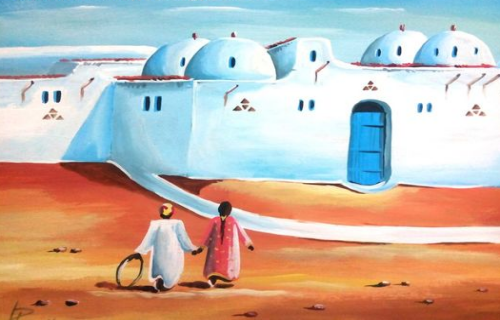
Inspired by the Nile, the surrounding palm trees and green fields, the always blue sky and the yellow mountains, every Nubian is almost born an artist. Since their young age, children paint scenes of their daily life. Even colors have a specific meaning in Nubian art, imitating the tints surrounding their villages. Painting mainly scenes of Nubian life, many painters and decorators rose to fame.
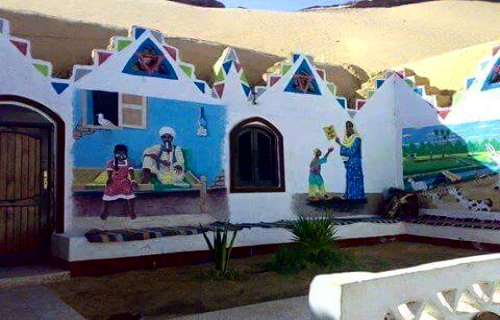
Since antiquity, Nubians were painting the walls of their houses with geometric patterns and scenes of their daily life. No wonder they artfully decorated their temples and graves with even higher prowess, and passed their art on to the Egyptian era of pharaohs. In addition to the richly decorated inner and outer walls, Nubian houses also astound through their unique architectural features that adapt to the climate and are used as a model for contemporary constructions.
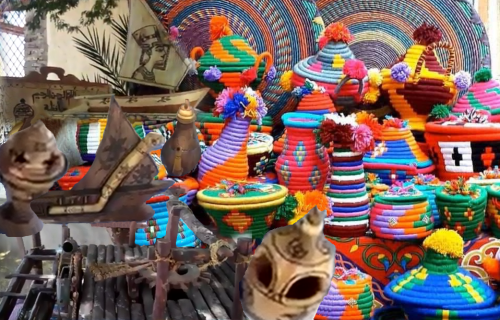
In the Nubian society, women hold an important position, and beside caring for home and family they contribute to the family's livelihood by crafting most clothes and household utensils. They improved their art and create beautiful handicrafts and jewelry for sale to travelers and tourists. Men not only build the house, they also craft beautiful items from copper and wood, mainly for home use.
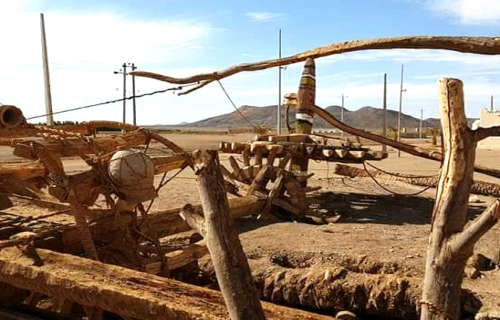
In the prehistoric Stone Age the inhabitants of the Nubian Nile Valley developed a unique stone tool flaking technique, known by archaeologists as the "Nubian Complex". The oldest human settlements in the World were also found in Nubia, as well as the World's first astronomical calendar. As long as about 3000 years ago, Nubians invented the Nubian Waterwheel, the first mechanical device in history, composed entirely from local materials, extracting water from the Nile to irrigate their land. This ingenious invention greatly improved productivity of agriculture, allowing Nubians to harvest all year and contributed to the rise of the powerful Kingdom of Kush.
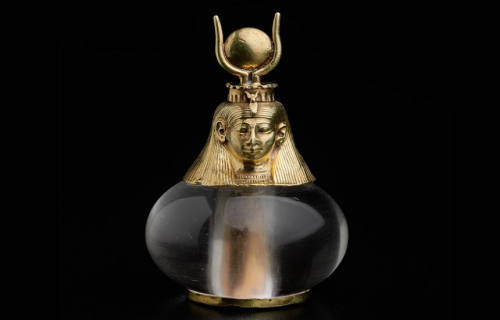
Historians and archaeologists who excavated ancient sites in Nubia since the beginning of the past century found breathtaking objects dating 3000 years ago, both elaborated and sophisticated in their art and shape. Tinted with racism and prejudices, they concluded that these objects must have come from Northern Egypt, assuming a people of dark-skinned Africans might not have been able to create such wonderful objects. It is only recently that historians revised their statements, some apologizing for the vilifying prejudices.
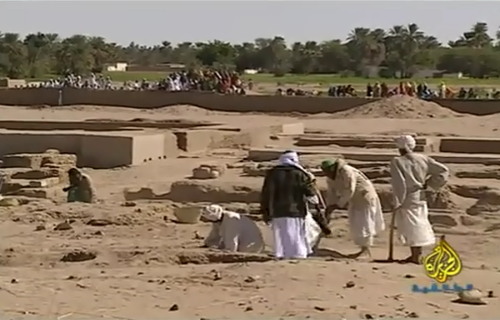
Encouraged by recent amazing finds by archaeologists on Nubian lands, study of Nubia sprouted in universities all-over the World, leading to Nubiology, study of Sudanese history and linguistic interest for the Old Nubian language. This increased interest caused the production of numberless documentary films about all aspects of Nubian history and heritage. Nubians as well are creating beautiful documentary films about Nubian music, villages, traditions and art. Enjoy with us...

Film and acting is another field in which some Nubians ascended to fame. Since they were dispersed into the large towns, Nubians - who have a natural affinity in expressing their feelings - were encouraged to participate in films or theatre performances. Photography as well benefits from the Nubians' charisma and love for beauty. Fortunately, the charm of Old Nubia motivated Nubians as well as travelers to take pictures of villages and landscapes before they were drowned by Lake Nasser. These photos of Old Nubia are now lovingly shared among Nubians in their nostalgia for Old Nubia.

The name Nubia is derived from the word "nubu", which means "gold" in Old Egyptian. As Nubia was very rich in gold that was mined since ancient times, it was coveted by its neighbor, Egypt of the Pharaohs. Not only were ancient Nubians masters in gold mining, they were also very skillful jewelers converting the pure gold into mind-blowing jewelry. Until this day, Nubian women, who are gifted with natural beauty, love to adorn themselves with jewelry - preferably made of gold.